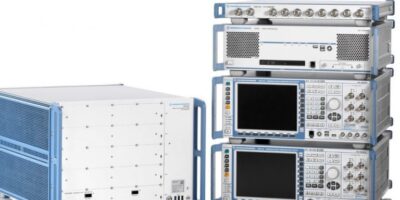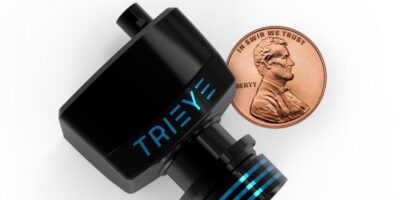Omron Electronic Components Business Europe has added a wide angle 32 x 32 element version of its D6T MEMS thermal sensor. It offers the widest field of view that Omron has ever delivered, says the company.
The Omron D6T-32L-01A can view across 90.0 x 90.0 degrees, enabling it to encompass a wide area, such as a whole room, from a single point. The sensor offers contactless measurement of temperatures of 0 to 200 degrees C in ambient temperatures of -10 to + 70 degrees C.
Omron D6T MEMS thermal sensors are based on an IR sensor which measures the surface temperature of objects without touching them using a thermopile element that absorbs radiated energy from the target object. They incorporate a MEMS thermopile, custom designed sensor ASIC and signal processing microprocessor and algorithm in a tiny package. According to Omron, the D6T offers the highest signal-to-noise ratio (SNR) in the industry. It converts the sensor signal to a digital temperature output giving a straightforward interface to a microcontroller. The design of the D6T, which measures only 14 x 8 x 8.93mm for the largest 32 x 32 element version, makes it well-suited to temperature detection in a range of IoT and other embedded applications.
The D6T-32L is one of three D6T variants by Omron, joining the 1×8 D6T-8L-09H and the 4×4 D6T-44L-06H, offering 54.5 x 5.5 and 44.2 by 45.7 degrees respectively. These two devices offer contactless temperature measurement between 5.0 to 200 degrees C at ambient temperatures of 5.0 to 45 degrees C.
The D6T sensors can be used to detect abnormal temperatures in industrial equipment on the production line to monitoring of food and other temperatures in the kitchen. This can save costs, allowing preventative maintenance to be undertaken in a timely manner, points out Omron, and can even save lives. They can also detect the presence and location of people in a space accurately and reliably.







